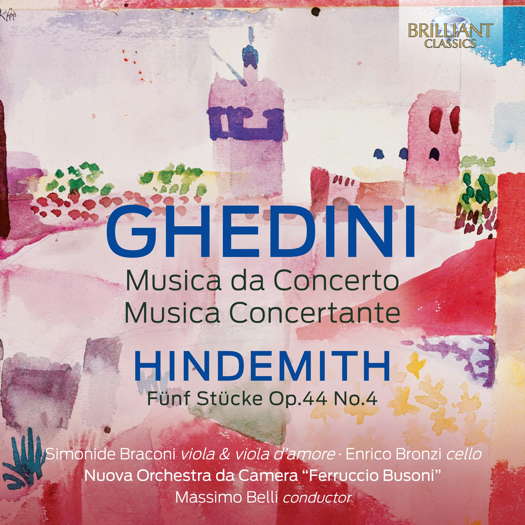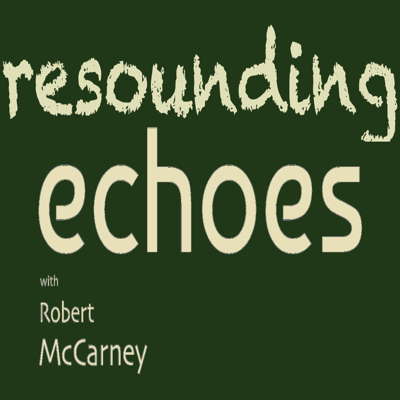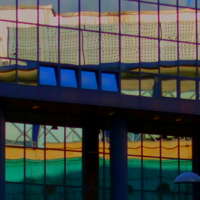- Anand Modak
- John Philip Sousa
- György Pauk
- Constant Lambert
- Saul
- Pennsylvania
- Philadelphia
- Alexander Koshelev

Ghedini and Hindemith
96117 (Brilliant Classics, CD)
DDD
FIRST RELEASE (1 June 2022)
Playing time: [c55']
Tracks: 7
Booklet pages: 7
℗ 2022 Brilliant Classics
© 2022 Brilliant Classics
Main country of recording: Italy
Country of manufacture: European Union
Reviewer: Geoff Pearce
Review of Ghedini and Hindemith published on 16 June 2022
Simonide Braconi, viola, viola d'amore
Enrico Bronzi, cello
The strings of the Nuova Orchestra da Camera 'Ferruccio Busoni'
Lucio Degani, first violin (tracks 2-6)
Massimo Belli, conductor
Giorgio Federico Ghedini (1892-1965):
1 Musica da Concerto for Viola, Viola d'Amore and String orchestra (1953)
Paul Hindemith (1895-1963):
Fünf Stücke for String Orchestra, Op 44 (1927)
2 Langsam (Lento)
3 Langsam. Schnell (Lento. Veloce)
4 Lebhaft (Vivace)
5 Sehr Langsam (Molto lento)
6 Lebhaft (Vivace)
Ghedini:
7 Musica Concertante for Cello and String Orchestra (1962)
Recorded 19-20 December [2021?] at the Hydrodynamic Power Station, Porto Vecchio, Trieste, Italy.
New recordings of unfamiliar, imposing concertos by an Italian contemporary of Prokofiev. Born in 1892, Giorgio Federico Ghedini was among those Italian composers – like Martucci and Casella – who elected to devote most of their energies to music for the concert hall rather than the stage. Initially writing in a relatively conservative neoclassical idiom, Ghedini began to take his place in the front rank of modern Italian composers during the late 1930s, with a terse, boldly sculptured series of 'edifici sonori' (as the composer called them), in which Stravinsky's influence is unmistakable. After the war his style continued to evolve through engagement with the concerto genre and the concerto grosso ensemble with its roots in the Italian Baroque. The private, reflective, plaintive characters of both solo instruments are well matched to Ghedini's idiom by this point in his career. Dating from 1953, the Musica da concerto for viola and string orchestra is cast in a single span which disguises a traditional fast-slow-fast arch, though the viola's powerful presence frequently draws the pulse of the music away from convention and into earnest dialogue with the strings. Neoclassical counterpoint briefly surfaces near the beginning of the final section, but otherwise the Musica da concerto is remarkable for its sustained lyric intensity around the soloist's almost ubiquitous presence. Composed in 1962, the Musica concertante for cello and string orchestra is emphatically late music – Ghedini died three years later – which has attained a measure of serenity compared to the earlier viola work. Here the string orchestra and soloist engage in overlapping waves of melody and rhapsody, rising and falling across a continuous sixteen-minute span, comparable to but distinct from contemporary concertante works by Henze (Ode to the West Wind) and William Schuman (A Song of Orpheus).



